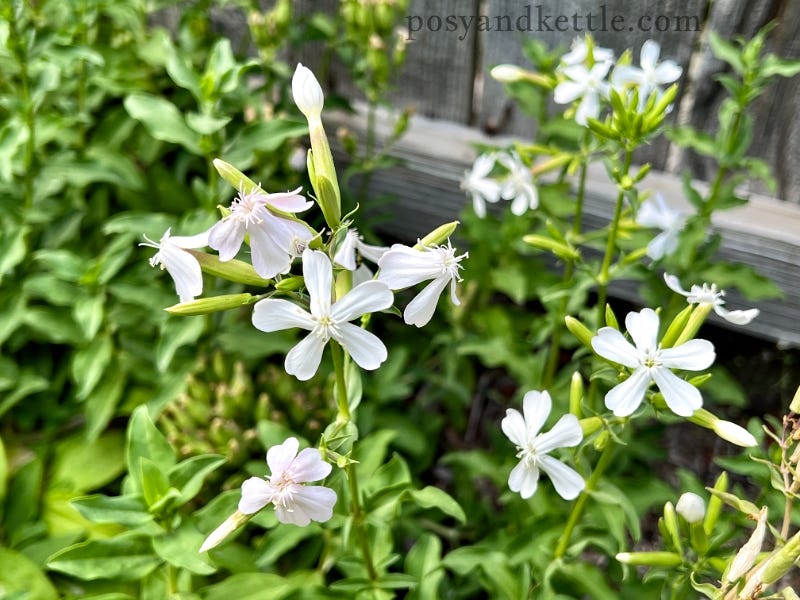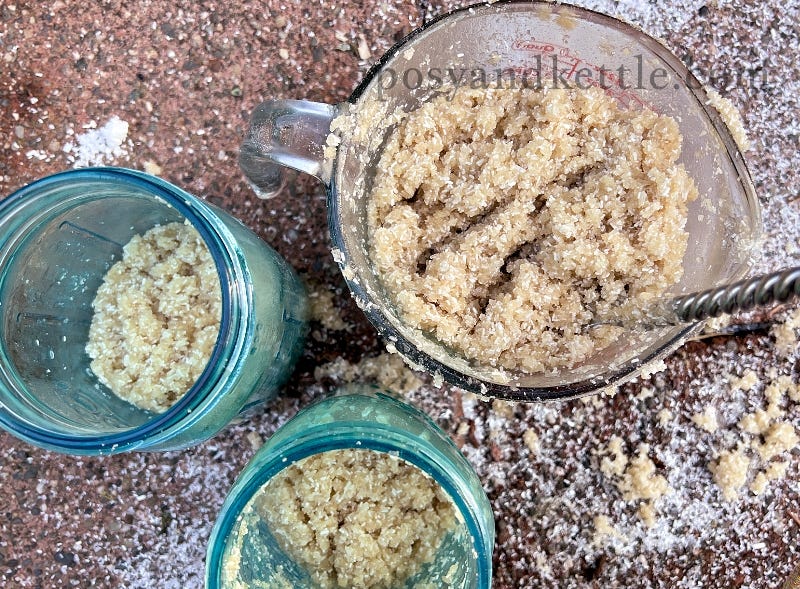Garden Spa: The Magic of Botanical Saponins
Saponin, the soapy goodness from roots, flowers, and fruits is growing all around you!
Saponins are a class of unique plant compounds that are both toxic and/or healing depending on how they are used. This class of compounds occur in a vast number of plants in various amounts, but some of the more well known saponin-producing plants are Saponaria officinalis, Sapindus Mukorossi, Quillaja saponaria which are used in both natural and industrial applications as a detergent, emulsifier, and in cosmetic applications.
I’ve written extensively about saponin producing botanicals in all of my books. These botanical saponins are particularly useful in emulsification of cannabinoids for baths and soaks and also aid in the penetration of cannabinoids through the skin.
But why do plants make saponins? Saponins, like other compounds that serve similar purposes, such as terpenes, provide defense from predators such as insects, vegetation-consuming animals, fungi, bacteria, and viruses. Saponins also contain a kind of plant steroid which contributes an anti-inflammatory effect to the saponin when prepared as a soap and used to cleanse the skin.
But what about the toxicity of saponins? Saponins are only mildly toxic (nausea, diarrhea, stomach ache) if they are ingested in sufficient amounts. Like the old chemist’s rule “it’s the dose that makes the poison” saponins are not toxic when used in food applications like traditional Halva or in topical applications to the skin or hair, or when used to clean fabric.
The saponin producing plant that I want to introduce and discuss with you today is Saponaria officinalis, pictured here as it grows in my personal spa garden. Sometimes called soapwort or crow’s soap, when in bloom the roots of this plant produce 20% or more saponin content. However, the entire plant produces saponin, including the leaves, stems and flowers. The saponins are most concentrated in the roots and the best time to dig those roots will be when the plant is in bloom, but you can dig them and make soap with them anytime. The flowers have a subtle but lovely sweet fragrance too, but this is difficult to capture when using the flowers or the rest of the plant for making the liquid saponin soap.
This plant is extremely easy to grow, so much so that if you aren’t planning on digging up the roots frequently I suggest growing these in a container because they can become quite invasive. If you live in a cooler environment, zones 8 - 3, this plant will die back in the winter and come back to life in the spring.
I’m putting up viable seeds from my own plants on my Etsy store soon, so if you think you’d like a packet of those, head on over next week and I’ll be happy to send you some.
Working with the roots of this plant are easy. Dig them, wash them really, really well, and then slice them up and put them in a blender with some water. Blend gently so as not to create a giant soap mountain, then strain the resulting liquid into a jar. Adding a little lemon juice will help preserve the liquid, but you will need to store it in the refrigerator. You can also add fresh aloe vera gel and blend that with the roots as well to create a moisturizing soap.
The soap you create can be used to wash your skin, hair, and it also makes a great detergent for washing fabric, especially fabrics that require gentle soap. It’s really amazing how versatile this soap actually is. I love using this as a shampoo because it cleans and softens hair just like the expensive professional shampoos out there!
The liquid soap you make will be neutral in fragrance—and this makes it quite different from some other soap plants like soap berries, for example, which have a slight cooked pineapple and vinegar type of fragrance. If you’d like to add a fragrance to your soapwort root liquid soap, you may also want to throw in some fresh lavender flowers, pine needles, or even rose petals!
Of course, one of my favorite ways to use plant saponins is outlined in several of my books. Using plant saponins as an emulsifier for cannabinoid-infused baths and soaks is shown in these photos. The top photo is the concentrated liquid made from cooking down the liquid soap preparation I just described and combining that with ingredients like epsom salt. This is a favorite foot soak of mine and adding just a couple of drops of eucalyptus essential oil makes this foot soak absolutely divine.
In my new book, Your Cannabis Experience, I detail a brand new, shelf-stable cannabis-infused bath salts recipe that includes plant saponin extract from soap berries to complete the emulsification process in the water that is essential for the resinous cannabinoids to distribute evenly in the water and make contact with every part of the body! In this application of plant saponin, the ingredients of the recipe are combined and then dehydrated to create a shelf-stable bath salt that can be stored on any shelf and has a much longer shelf life than my previous liquid formulation recipe that was detailed in my first book.
And you can make a recipe like this totally your own with the addition of whatever ingredients you desire in addition to the basic ingredients of the recipe.





